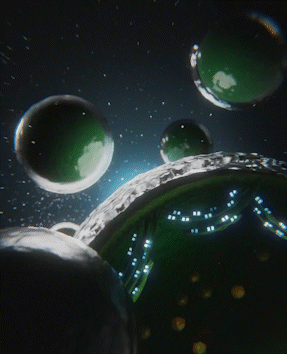Welcome to the Department of Biochemistry
Our research focuses on one of the most fundamental bioenergetic processes in nature: how photosynthetic organisms convert light energy into chemically stored energy. In particular, the "discovery" of oxygenic photosynthesis by cyanobacteria about 3.4 billion years ago, which releases O2 as a by-product, enabled the large-scale conversion of atmospheric CO2 into biomass. This process is essential for almost all life on Earth today, and it is also the origin of all fossil fuels. Our goal is to explore the fundamental principles of photosynthetic energy conversion at the molecular level and use this information to develop future biosolar technologies.
+++ NEWS +++
Photosynthesis ‘hack’ could lead to new ways of generating renewable energy

Photosynthesis re-wired on the pico-second timescale
Photosystems II and I (PSII, PSI) are the reaction centre-containing complexes driving the light reactions of photosynthesis; PSII performs light-driven water oxidation and PSI further photo-energizes harvested electrons. The impressive efficiencies of the photosystems have motivated extensive biological, artificial and biohybrid approaches to ‘re-wire’ photosynthesis for higher biomass-conversion efficiencies and new reaction pathways, such as H2 evolution or CO2 fixation. Previous approaches focused on charge extraction at terminal electron acceptors of the photosystems. Electron extraction at earlier steps, perhaps immediately from photoexcited reaction centres, would enable greater thermodynamic gains; however, this was believed impossible with reaction centres buried at least 4 nm within the photosystems. Here, we demonstrate, using in vivo ultrafast transient absorption (TA) spectroscopy, extraction of electrons directly from photoexcited PSI and PSII at early points (several picoseconds post-photo-excitation) with live cyanobacterial cells or isolated photosystems, and exogenous electron mediators such as 2,6-dichloro-1,4-benzoquinone (DCBQ) and methyl viologen. We postulate that these mediators oxidize peripheral chlorophyll pigments participating in highly delocalized charge-transfer states after initial photo-excitation. Our results challenge previous models that the photoexcited reaction centres are insulated within the photosystem protein scaffold, opening new avenues to study and re-wire photosynthesis for biotechnologies and semi-artificial photosynthesis.
Baikie TK, Wey LT, Lawrence JM, Medipally H, Reisner E, Nowaczyk MM, Friend RH, Howe CJ, Schnedermann C, Rao A, Zhang JZ (2023) Photosynthesis re-wired on the pico-second timescale. Nature, DOI: 10.1038/s41586-023-05763-9.




